ciabatta, pan bagna, & garlic bread
By á-24918
tips from our bakers (King Arthur Flour)
Because this dough is so soft, it's virtually impossible to knead it by hand. Please use an electric mixer or your bread machine to knead the dough.
For extra-crispy loaves: When they're done baking, turn off the oven. Remove the loaves from the baking sheet, and return them to the oven, propping the oven door open a couple of inches with a folded-over potholder. Allow the loaves to cool completely in the oven.
Ingredients
- 1 . overnight starter
- 1 1/2 cups King Arthur Unbleached All-Purpose Flour
- 1 cup cool water
- 1/16 teaspoon instant yeast
- 2 . dough
- all of the starter (from above)
- 1 teaspoon instant yeast
- 1 1/2 cups King Arthur Unbleached All-Purpose Flour
- 1 1/4 teaspoons salt
- 1 teaspoon sugar
- 1 tablespoon Baker's Special Dry Milk or nonfat dry milk
- 1/4 cup lukewarm water
- 2 tablespoons olive oil
- 3 . topping for garlic bread
- 1 medium head of garlic, cloves separated and peeled (about 15 medium cloves)
- 1/2 cup (1 stick) unsalted butter, melted
- 1/3 cup olive oil
- pinch (1/16 teaspoon) of salt
- 1 cup freshly grated Parmesan cheese
- snipped fresh parsley, for garnish (optional)
Details
Preparation
Step 1
1) To make the starter: Mix the starter ingredients in a small bowl until well combined. Cover the starter and let it rest at room temperature overnight, or for up to 15 hours. It will become bubbly.
2) Place all of the dough ingredients, including the starter, into the bowl of your mixer, and beat at medium speed, using the flat beater, for 7 minutes. The dough will be very smooth, soft, shiny, and elastic. Alternatively, knead the dough ingredients in your bread machine using the dough cycle.
3) Transfer the dough to a greased bowl or other rising container, cover it, and let it rise for 2 hours, deflating it midway through. If you're using a bread machine, allow it to rise for an additional hour after the dough cycle has ended.
4) Lightly grease your work surface, and a half-sheet baking pan (18" x 13") or similar large baking sheet. Grease your hands, as well.
5) Very gently turn the dough out of the bowl onto your work surface; you don't want to deflate it. It'll lose a bit of volume, but don't actively punch it down.
6) Using a bowl scraper, bench knife, or your fingers, divide the dough in half. You should have two fat logs, each about 10" long x 4" wide.
7) Handling the dough gently, transfer each piece to the baking sheet, laying them down crosswise on the sheet. Position them about 2 1/2" from the edge of the pan, leaving about 4" between them.
8) Lightly cover the dough with heavily oiled plastic wrap or a proof cover, and allow it to rise for 60 to 90 minutes. Midway through, gently but firmly dimple the dough with your fingers, making fairly deep pockets. Towards the end of the rising time, preheat the oven to 425°F.
9) Spritz the risen loaves with lukewarm water. You'll see that the dimples have filled in somewhat, but haven't entirely disappeared.
10) Bake the loaves till they're golden brown, about 18 to 20 minutes. Remove them from the oven, and cool on a rack.
11) To make garlic bread: Prepare the topping by combining the minced garlic cloves, melted butter, olive oil and a pinch of salt.
12) Cut the loaves in half lengthwise, like you're going to make giant sandwiches.
You'll also love
-
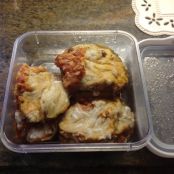 LIGHTER EGGPLANT PARMESAN
4.7/5
(13 Votes)
LIGHTER EGGPLANT PARMESAN
4.7/5
(13 Votes)
-
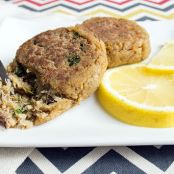 Sweet and Spicy Crab Cakes
4.7/5
(13 Votes)
Sweet and Spicy Crab Cakes
4.7/5
(13 Votes)
-
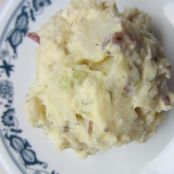 Red Potato Salad
4.7/5
(13 Votes)
Red Potato Salad
4.7/5
(13 Votes)
-
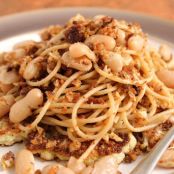 Pasta with White Beans, Roasted...
4.8/5
(8 Votes)
Pasta with White Beans, Roasted...
4.8/5
(8 Votes)
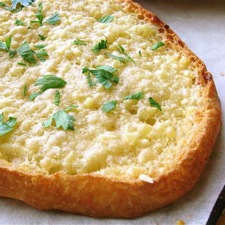
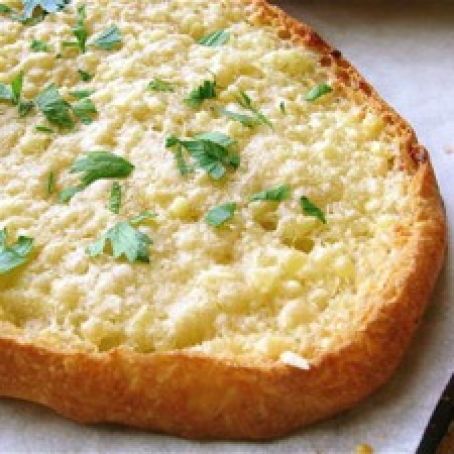
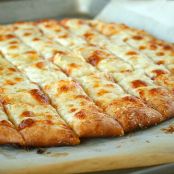

Review this recipe